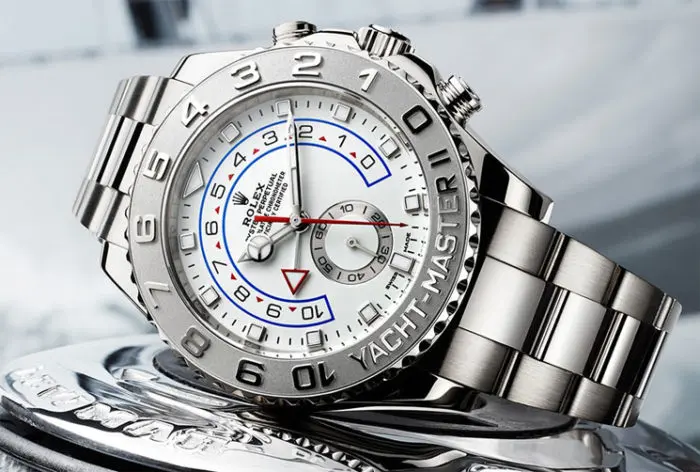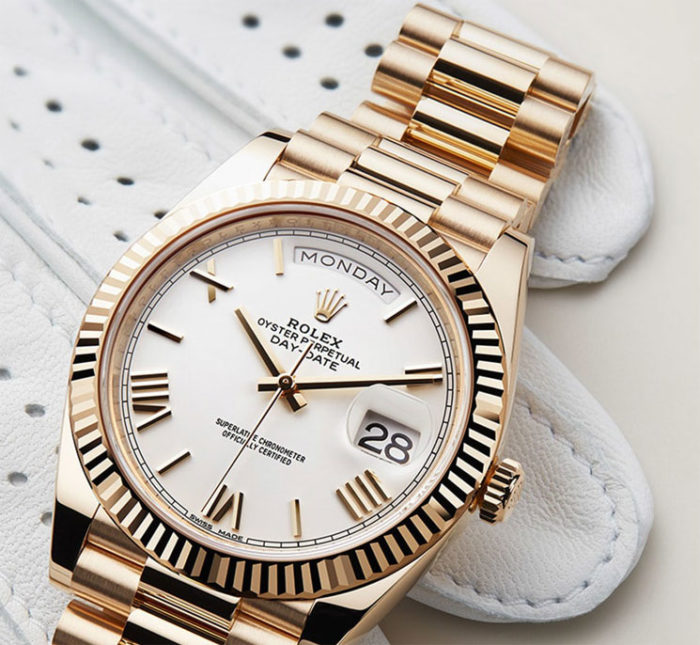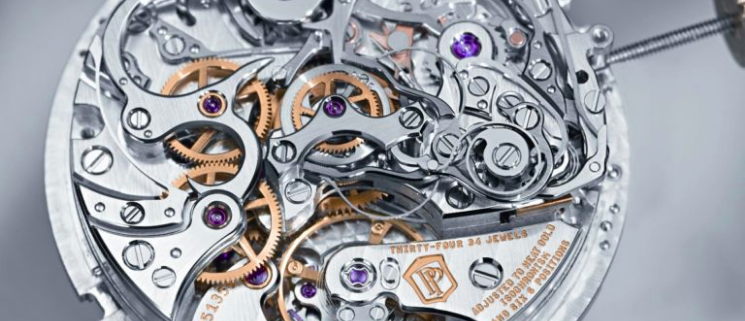Let me tell you a story.
It involves me in a hot tub…
…in fact, it involves me making a big mistake in a hot tub. One with repercussions.
Don't worry, it also involves expensive watches.
Want to know what I did? Read on.
There’s evidence to suggest that conscientiousness is associated with watch-wearing. Despite this, we can be careless. In today's lesson I'm going to show you 10 tiny mistakes that will destroy your expensive watch.
Mistake #1. Turning Back The Hands Of Time

Turning the hands counterclockwise on mechanical watches – especially vintage pieces – can severely damage the watch's internal components. This isn't the case with modern watches which have failsafe devices but you should always err on the side of caution and adjust the time forwards, never backwards. (Why would you want to anyway?)
Mistake #2. Adjusting The Date At The Wrong Time

This mistake shocked me because it's something I've done without realizing.
Never adjust the date on your mechanical watch when the hands are between 10pm and 2am. At this point your watch's internal mechanisms are adjusting the date automatically and you can damage your expensive watch if you go in and force this change yourself, while this is happening.
Mistake #3. Over-winding Your Expensive Watch

This mistake mainly applies to mechanical watches of a certain age or watches at the cheaper end of the scale.
Overwinding your watch can break its power source – the mainspring. When you wind a manual watch, you’ll slowly start to feel the mainspring building up resistance. Slow down when you start to feel this and gently continue to wind until you can’t wind it any further. In most cases, 20-30 winds is enough to fully wind a watch.
Mistake #4. Forgetting To Close Your Hatch!

I've just read a horror story about an Indian nuclear submarine – the first of its kind – which was severely damaged after someone left a hatch open, allowing water to flood in. (I bet that sailor's face was red afterwards.)
The same thing can happen to your watch. Before submerging – in fact, before going near water at all – you need to make sure the crown and any pushers are completely screwed down to keep the water out. Batten down the hatches!
Mistake #5. Not Understanding Water Resistance of Your Watch

OK, so back to the hot tub…
I was taking my kids swimming and after a few lengths, I decided to jump into the hot tub. I had my Rolex on but it's waterproof.
I didn't give it a second thought.
So when I jumped in the hot tub, guess what happened?
Well, nothing. But I later found out I dodged a bullet. I knew my expensive watch was waterproof but I hadn't taken into account the temperature change between the pool and hot tub.
The temperature change from cold water to hot water can cause metal to expand and this could damage your watch. The temperature change can also accelerate the natural degradation of the watch seals.
You also need to understand what water resistance means. If your watch is water resistant up to 30M, it does not mean you can swim at this depth for a length of time. This figure means your watch can withstand the pressure at 30M for a small duration. So don't go swimming for hours on end and expect your watch to be absolutely fine.
The majority of water resistant watches are not designed to be submerged for extended periods.
Mistake #6. Buying Expensive Watch Without A Warranty
We've all seen the horror stories on Amazon. You buy a watch with a warranty but have you checked the fine print? Is the warranty from an authorized dealer? Does it cover accidental damage?
Some warranties aren't worth the paper they're written on. Make sure yours is comprehensive and make sure you know exactly what it covers. Always buy a warranty from an authorized dealer to avoid having to go through third-parties: you want someone you know and trust.
Mistake #7. Going Uninsured
If you have a relatively modest amount of jewelry – say it’s worth less than $2,000 – then it should be covered as standard by your contents insurance policy.
But most contents policies will limit the amount you can claim for any one single item, such as a a watch.
If you have a quality watch, you may find you need to add specialist jewelry or valuables insurance on top of your contents cover. Keep your proof of purchase and take photos of your watch because you will need these in the event of a claim. I film walkthrough videos of my expensive possessions every time I add to my collection and I email this to my insurer. You can never be too careful when it comes to expensive watches!
Mistake #8. Coming Into Contact With Magnets
Magnetic fields affect your your watch’s time keeping ability. If your watch’s balance wheel gets magnetized, that will add friction and bias to the system and the watch will likely slow down or stop.
Avoid leaving your watch near strong magnetic fields like speakers, refrigerators, mobile phones, or even magnets on your wife or girlfriend’s handbag.
Gauss is a measurement of magnetic strength and a watch can stop working at 60 Gauss. To put it in perspective, the magnet on a fridge door is 50 Gauss!
Mistake #9. Avoid Shocks

Watches like the G-Shock are designed for physical activity. They are made from urethane rubber and stainless steel and have hardened crystal faces and floating mechanisms to absorb shock.
Your expensive watch isn't designed for physical activity (when is the last time you saw a referee wearing a Patek Phillipe?) and there are day-to-day activities which could damage your timepiece. And I'm not just talking about the case; I'm talking about the complex, precision made internal components too.
Exercising or playing sports? Get a watch designed for physical activity.
Be conscious of what you're doing. Sports like Golf or Tennis or activities like chopping wood can shock and damage your watch and its strap.
Oh – and no matter what you're doing, make sure your watch works with your outfit.
Mistake #10. Forgetting Routine Maintenance of Your Watch
OK so I'm listing this as a mistake but the truth is: I'm unsure.
I've read guides which state you should take your watch in for routine maintenance every 3-5 years (the exact timeframe differs depending on the watch). But if it's working perfectly, why should I? It's an expensive watch and I don't know how I feel about someone opening the back up and adjusting the components.
What do you think? Is this a case of ‘if it's not broken, don't fix it'? Or is a watch like a car engine – it needs routine maintenance even appears to be working perfectly? I want to hear from you! Let me know in the video comments.
So now you know how to keep your expensive watch in A1 condition. Do you want to know what watch to add to your collection next? My advice is to go for the Chronograph. Check out my Simple Guide To The Chronograph Watch.
If you're hungry for more watch-related content, my 65-page eBook gives you everything you need to know about how to wear a watch and look good. Click here to get your free copy today.
The post 10 Costly Mistakes That DESTROY Your Expensive Watch appeared first on Real Men Real Style.
0 Commentaires